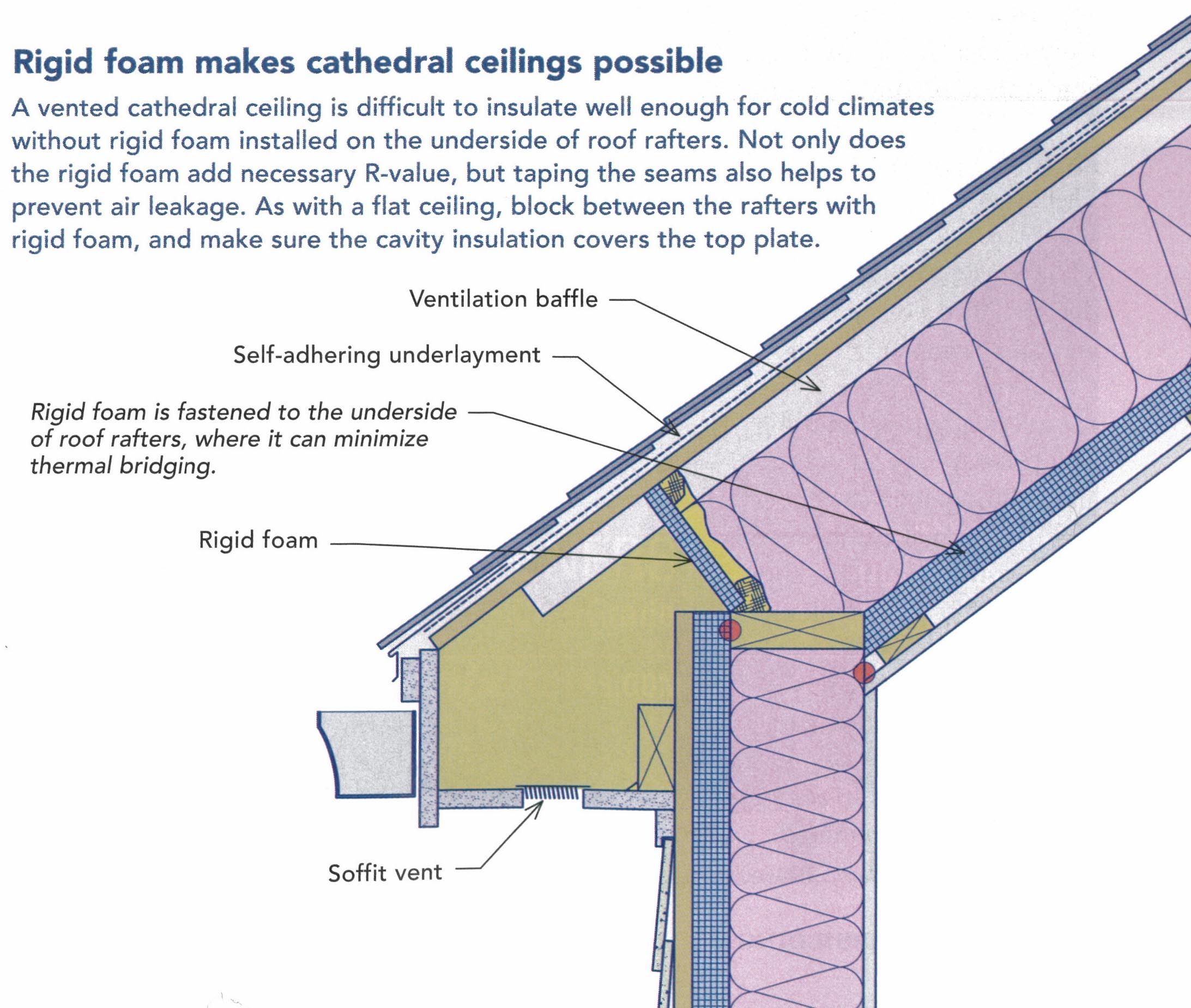In addition to installing the foam board on the underside of the roof deck you can attach it to the bottom edges of the rafters in the same manner you would hang drywall.
Insulating underside of roof.
For the same reason insulation shouldn t touch the roof s underside.
Cut each sheet to the desired size using a utility knife then fasten it in place using staples or adhesive.
However architects of these compact roof assemblies must consider vapor permeance and arrangement of the materials to produce acceptable hygrothermal performance and low risk of condensation in the resulting conditioned attic space.
At the same time the areas below the roof benefit from increased comfort both during the winter and the summer.
Use rigid foam insulation to cover wider spans of roof sheathing between joists.
Lstiburek takes blame for bad language.
After cutting the plasterboard to width so that it fits between horizontal centres of rafters screw the insulated plasterboard to the rafters.
The movement of air into indirect conditioning of an unvented attic is a slow gradual process that will not be noticeable by occupants and typically will not put any strain on the hvac system.
Insulation an external masonry wall.
Insulation and air barrier are applied directly to the underside of the roof deck are common in applications where designers are seeking cost effective and energy efficient roof assemblies.
It will help you to eliminate problems that may come when the house becomes extremely cold in the winter and terribly hot in the summer.
You can then install.
The airflow from the soffits to the ridge vent keeps the roof cool and prevents ice dams and the material will block that flow.
Low slope and steep slope unvented roof systems i e.
In this way you prevent the heat from the rooms below escaping to the attic rooms above.
It s not coming from above the roof and it s not some new moisture source resulting from the spray foam.
Then you could simply insulate the pitched roof.
Fitting the insulated plasterboard.
Stagger the horizontal joins.
Polyurethane spray foam metal roof insulation in order to add moisture barrier under metal roof you can spray the undersides of the roof by using a thick layer of polyurethane spray foam.
Staple plastic or foam baffles to the roof sheathing near the eaves to keep the material away.
But spray foam insulation used at the underside of the roof deck would need to be covered by a thermal barrier and intumescent coatings are commonly used.
The bottom of the insulated plasterboard should meet the floor level of the roof space.















































